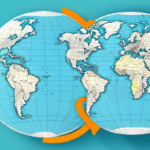Understanding UPS International Envelope Shipping Rates
When it comes to international shipping, businesses need to be aware of the various factors that affect shipping rates. In the case of envelope shipping, UPS is a major carrier that offers reliable and efficient services worldwide. Understanding how UPS calculates its international envelope shipping rates is crucial to avoid overpaying for shipping and to make informed decisions that benefit your business.
Why UPS International Envelope Shipping is Important for Your Business
Globalization has facilitated business transactions on a global scale. Consequently, international shipping has become a crucial aspect of conducting business. Efficient and prompt envelope shipping services can help businesses in various sectors, including export and import, legal and financial services, education, and healthcare. UPS offers a high-quality envelope shipping service that includes reliable transit times, tracking, and customized delivery options, making it a top choice for businesses in need of a dependable international envelope carrier.
Moreover, UPS International Envelope Shipping provides businesses with a cost-effective solution for sending important documents and small packages overseas. With competitive pricing and a range of delivery options, businesses can choose the service that best suits their needs and budget. Additionally, UPS's extensive network of global partners ensures that packages are delivered to their destination quickly and efficiently, reducing the risk of delays or lost shipments. By choosing UPS International Envelope Shipping, businesses can streamline their international shipping processes and focus on growing their business.
Differences Between Domestic and International Envelope Shipping Rates
International shipping rates for envelopes tend to be higher than those for domestic shipments. UPS charges based on several factors, including:
- Package weight and dimensions
- Destination country
- Shipping origin
- Shipping speed
- Need for customs clearance
Compared to domestic shipments, international envelope shipping typically involves higher administrative and logistical costs, such as customs clearance and compliance with international shipping regulations.
Another factor that affects international envelope shipping rates is the distance between the shipping origin and destination. The farther the distance, the higher the shipping cost. Additionally, international shipments may be subject to taxes and duties imposed by the destination country's government, which can further increase the overall cost of shipping. It is important to consider these additional costs when deciding whether to ship domestically or internationally.
How to Calculate UPS International Envelope Shipping Rates
The UPS website provides a helpful tool to calculate shipping rates accurately. The tool requires you to input details on the package's weight, dimensions, destination country, and shipping origin. After processing these details, the tool generates a quote that includes a breakdown of all applicable charges, such as customs clearance fees, shipping fees, and taxes. Businesses can use this tool to make informed decisions on the shipping options that best meet their budget and delivery requirements.
It is important to note that UPS offers various shipping options for international envelopes, including express and economy services. Express services are ideal for urgent shipments that require fast delivery times, while economy services are more cost-effective but may take longer to arrive. Additionally, UPS provides tracking information for all international shipments, allowing businesses to monitor the progress of their packages and ensure timely delivery.
Factors That Affect UPS International Envelope Shipping Rates
The size and weight of the envelope are crucial in determining shipping rates. The shipment's destination country and shipping origin can affect the transit time and shipping costs. Other factors that may impact shipping rates include:
- The value of the shipment
- Applicable customs duties and taxes
- Need for additional customs documentation
- Type of delivery option selected (express, expedited, standard)
Additionally, the type of item being shipped can affect UPS international envelope shipping rates. Certain items, such as hazardous materials or perishable goods, may require special handling or packaging, which can increase shipping costs. The level of insurance coverage selected for the shipment can also impact the shipping rate.
It's also important to note that UPS may offer discounts or promotions for certain shipping destinations or for customers who frequently use their services. These discounts can help reduce shipping costs for businesses or individuals who regularly ship internationally with UPS.
Understanding the Factors That Affect Customs Duties and Taxes for International Envelope Shipping
In addition to shipping rates, businesses must also be aware of potential customs duties and taxes that may apply when shipping internationally. The amount of customs duties and taxes varies depending on the shipment's destination country and the value of the goods. Customs duties and taxes are levied by the destination country's customs authority and must be paid by the recipient upon delivery. UPS provides assistance in complying with customs regulations and offers a range of customs brokerage services to ensure efficient customs clearance.
Certain goods may be subject to additional regulations and restrictions when shipping internationally. For example, some countries may prohibit the import of specific items such as food, plants, or animal products. It is the responsibility of the shipper to ensure that they are aware of any restrictions and comply with all regulations. Failure to do so can result in delays, fines, or even the seizure of the shipment. UPS offers resources and guidance to help businesses navigate these regulations and ensure smooth international shipping.
Tips for Saving Money on UPS International Envelope Shipping Rates
Businesses can save money on international envelope shipping rates by implementing the following strategies:
- Optimize Packaging: Reduce the weight and dimensions of the shipment to lower shipping costs.
- Select Cost-Effective Delivery Options: Choosing a delivery option with a longer transit time, such as standard shipping, can help reduce costs.
- Utilize Volume Discounts: Negotiate a contract rate with UPS based on your shipping volume to take advantage of discounts.
- Understand Customs Regulations: Ensure compliance with customs regulations to avoid penalties or delays.
- Use UPS's Online Shipping Tools:
- Compare rates and delivery times for different shipping options.
- Print shipping labels easily.
- Track packages efficiently.
- Consider Third-Party Logistics Providers (3PL): Using a 3PL can help negotiate better rates with shipping carriers, including UPS. 3PLs have established relationships with carriers and can secure significant cost savings for businesses that frequently ship internationally.
Additionally, businesses can compare UPS rates with those of other carriers to ensure they are getting the best deal. For more information on comparing shipping carriers, visit our comparison page.
Comparison of UPS International Envelope Shipping Rates with Other Carriers
While UPS is a reliable and popular choice for international envelope shipping, it's important to compare their rates with those of other carriers to ensure you're getting the best deal. Other carriers that offer international envelope shipping services include FedEx, DHL, USPS, and TNT. Businesses should compare the rates and services provided by each carrier to find the most cost-effective and efficient solution for their needs.
It's also worth noting that some carriers may offer additional services or benefits that could be valuable to your business. For example, FedEx offers a money-back guarantee on their international shipping services, while DHL has a strong reputation for fast and reliable delivery. Additionally, some carriers may have better coverage in certain regions or countries, which could be important if you frequently ship to those areas. It's important to consider all of these factors when comparing carriers and making a decision on which one to use for your international envelope shipping needs.
Best Practices for Packaging and Labeling for International Envelope Shipping with UPS
Proper packaging and labeling are crucial for ensuring that shipments arrive safely and quickly. Here are some best practices:
- Sturdy Packaging: Use packaging that protects the contents and complies with international shipping regulations.
- Accurate Labeling:
- Include the recipient's name, address, and phone number.
- Include the sender's name and address.
- Add any applicable tracking numbers.
- Customs Declaration: Attach a customs declaration form indicating the contents and their value.
- Durable Envelopes: Use envelopes made of durable materials such as Tyvek or plastic to protect the contents during transit.
- Avoid Overstuffing: Do not overstuff envelopes to prevent tearing or bursting during shipping.
By following these best practices, businesses can ensure their international envelope shipments arrive safely and in a timely manner.
Common Pitfalls to Avoid When Sending an Envelope Internationally with UPS
Businesses should avoid several common mistakes when shipping envelopes internationally with UPS:
- Incorrect Packaging and Labeling: Ensure that packaging is sturdy and labels are accurate to avoid delays.
- Non-Compliance with Customs Regulations: Familiarize yourself with and adhere to all customs requirements to prevent fines or shipment seizure.
- Misunderstanding Shipping Fees and Charges: Review all applicable fees to avoid unexpected costs.
- Ignoring Shipment Restrictions: Be aware of any restrictions on goods or destination countries.
- Incorrect Recipient Address: Double-check the recipient's address for accuracy to prevent delivery issues.
Additionally, businesses should:
- Review Shipping Invoices: Ensure all charges are correct and address any discrepancies promptly.
- Consider Delivery Time: Plan shipments based on estimated delivery times and choose the appropriate shipping option.
By understanding UPS's international envelope shipping rates and adhering to best practices, businesses can make informed decisions that benefit their budgets and shipping requirements. With proper planning and compliance with shipping regulations, businesses can enjoy reliable and efficient international envelope shipping services that help them grow and succeed in the global marketplace.




















